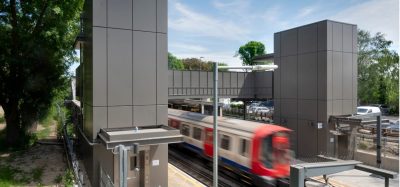Rhine-Rhône HSL: sustainable development in a rail sector environment
Posted: 6 December 2011 | | No comments yet
On 8 September 2011, Réseau Ferré de France (RFF) inaugurated the first part of the eastern branch of the Rhine-Rhône high-speed line. Included in the design and construction of this line, with its major socio-economic challenges, was a series of innovative environmental measures to ensure its long-term sustainability.
Rhine-Rhône HSL: the project
A European dimension
The Rhine-Rhône HSL will further strengthen France’s position in a Europe that is gradually expanding towards the East. Financial support from Switzerland and EU ‘priority link’ status, under the Trans-European Transport Network programme, both underline its recognised importance at community level.
Looking at the map of the present and future European network of high-speed lines, the strategic position of the Rhine-Rhône line is immediately apparent, as a major feeder at the core of mainland Europe and as a link between the different European territories.
By virtue of its geographical position, the Rhine-Rhône HSL will bring France closer to major economic and population centres in the Rhine basin and the Benelux countries, and will give them easier access to the economic and urban centres of the Mediterranean. While not only France, Switzerland and Germany (the main towns and regions concerned being those round Freiburg, Karlsruhe, Stuttgart and Frankfurt) stand to gain more particularly from the line, the whole of the Mediterranean arc should also feel its knock-on benefits.
This upgrading project with a price tag of €2.312 billion has been funded by a total of 20 partners, including the French State, the European Union, Switzerland, the Burgundy, Franche-Comté and Alsace Regions, and Réseau Ferré de France.
The eastern branch of the Rhine-Rhône HSL: 190km of high-speed line between Dijon and Mulhouse
The first phase of the eastern branch of the line links Villers-les-Pots (to the East of Dijon) with Petit-Croix (to the South-East of Belfort) over a distance of 140km. Work on this first section of high-speed line began in July 2006.
After six years of work, the first section of the line is due to be placed in revenue service on 11 December 2011.
Three factors for leveraging sustainable development: the economy, society and the environment
Positive socio-economic impact for the regions
Throughout the Rhine-Rhône HSL construction process, RFF was unceasing in its efforts to address employment issues, so that the regions concerned would be able to derive maximum benefit from this investment. Its determination is borne out, in particular, by its decision to include highly demanding and extremely innovative clauses in the contracts signed with its works contractors. Emphasis was on the two key principles of safety and social inclusion. It was the first time that an approach of this type had been adopted for such a large-scale site.
An average of 6,100 people per year played a part in this massive venture, which impacted strongly on the regions crossed. On site, 1,000 long-term jobseekers or people living on minimum benefits were able to re-enter the employment market under the specific social inclusion scheme put in place.
The spinoffs in employment terms of a project such as the building of a HSL do not only affect those working on the site. Other indirect and newly generated job opportunities should also be considered.
The construction of the new HSL involved the main national public works groups, who brought in their experienced, qualified personnel for the purpose. A large majority of those working on the site (64% to be exact) were permanent employees of the companies concerned.
Short-term contracts for the duration of the site, which offer employers less flexibility than the use of agency staff, accounted for some 15% of salaried staff. This type of contract was essentially used for local jobseekers. By contrast, fixed-term contracts represented less than 3% of the total workforce, this type of contract being ill-adapted to the types of trade involved.
For the first time on a worksite of this type, RFF insisted on the inclusion of a social clause in all its works contracts for the eastern branch of the Rhine-Rhône high-speed line.
This clause was a condition sine qua non when letting the different works package contracts. It stipulated that employers would have to earmark a percentage of all hours worked for those in the social inclusion category.
The aim was to offer the chronic unem – ployed, those living on minimum benefits, people with recognised disabilities, young jobseekers with few or no qualifications (including those seeking their first jobs) the chance to gain a foothold on the employment market. In the end, the social inclusion clause was applied to 12% of the hours worked in the civil engineering sector (as opposed to the requisite 7%), the figure for landscaping operations should be similar, and that for railway equipment as much as 14% (compared with the initial target of 5%). The scheme proved the most beneficial for long-term jobseekers (44% of those concerned), and the young unemployed (24%). In all, 989 people were able to take advantage of the scheme.
Even after the end of work on the site, there remains 60 direct jobs at the Geneuille (Doubs) maintenance base, in addition to the many jobs indirectly created in connection with maintenance and operation of the HSL, the figures for which have yet to be established.
Safety – a top priority
For the first high-speed line project under its responsibility from start to finish, RFF was determined to achieve excellence at all stages and to brook no compromises, in particular as regards railway safety, not only during the line design and construction phases but also looking ahead to its future operation.
For the rail sector, the project took place at a crucial moment, since the start of work on the Rhine-Rhône high-speed line coincided with the foundation of the Railway Safety Authority (EPSF), one of the roles of which is to inspect new infrastructure and issue the authority to open new lines to revenue traffic.
Since 27 September 1981, when the very first train was worked in revenue service on the first section of high-speed line between Paris and Lyons, no lives have been lost due to railway operations on such lines in France, largely because of the robust and proven signalling system used, thus securing rail’s position as one of the safest modes. Since 1981, more than 1.5 billion passengers have thus been able to travel in complete safety.
The type approval process for the line was also reinforced, in particular with the addition of the so-called ‘integration’ tests. These are tests and procedures developed in 2009 and first applied in practice from summer 2010 via a series of so-called ‘static’ tests, during which the workings of all the equipment on the new line were tested.
For nearly three months, a specific test train, kitted out with an on-board technological laboratory, clocked up more than 60,000km on the line to test and validate all the different functionalities. Any malfunction or anomaly detected, however slight, was followed by repair or replacement operations with the result that test outcomes were fully compliant with the requirements for type approval of the line.
Built for trains to be worked in revenue service at 320km/h, the Rhine-Rhône HSL has been tested at speeds in excess of 352km/h (i.e. revenue speed plus 10%) to guarantee its performance under extreme conditions.
An exemplary worksite from an environmental perspective
For the first time on a high-speed railway line, RFF has produced a sustainable development inventory. This inventory, which was made public on 6 July 2011, is made up of:
- The statutory inventory that has to be produced 3-5 years after commissioning (socio-economic and environmental balance sheets)
- The results of the carbon inventory (bilan carbone®) conducted on the line u An inventory of the programme of additional measures
- An inventory of the works phase.
To achieve its self-imposed targets, RFF insisted that its main contractors and site operators apply an environmental management system. More than 25 people were specifically employed to oversee the environmental aspects of the works, with the appointment of an environment manager for each works package.
All these efforts in the interests of the natural and human environment are to be submitted to a general inventory, in accordance with the requirements of France’s Inland Transport Act, (LOTI). This inventory has to be carried out 3-5 years after the line is placed in service in order to verify that all undertakings have been met, the measures adopted have proved effective and to propose any necessary adaptations. This overall inventory concerns the direct and indirect effects of the new infrastructure in economic, social and environmental terms.
More specifically, over 272 sites of different sorts have been subjected to environmental inventory. The process began in early 2009 and will continue through to the final inventory scheduled for five years after the infrastructure has been commissioned, in other words in 2016.
The inventory process has been designed as a guide to ‘good practice’ and therefore represents a principle to be applied elsewhere. It includes a number of testimonials to illustrate the measures introduced and collect feedback from the protagonists and other parties concerned (farmers, hunters, associations, experts, etc.). It will be used in preparing the second phase of the Rhine-Rhône HSL but also for all railway infrastructure projects in the pipeline, now and in the future. It is a clear illustration of how forward planning, large-scale consultations with all the players and the presence of large numbers of people in the field can culminate in solutions that are, at times, innovative and often simple and easy to enforce.
The eastern branch of the Rhine-Rhône HSL: setting the example
Given the many innovations introduced to enable the high-speed line to meet the requisite sustainability criteria, the time has now come to collect feedback and transfer the information acquired to the other major projects masterminded by RFF.
The worksite was a prime example of rail sector excellence, in that it was able to benefit from a series of innovations in the fields of safety, environmental-friendliness, preservation of the national heritage and sustainable development that are fully consistent with the Grenelle Environment Forum. Construction of this line has brought new economic and social momentum to the regions crossed and, when it is open to traffic, will bring them more frequent services and enhanced economic development prospects, together with sub – stantial trip time savings.
About the Author
Xavier Gruz is a civil engineer (Ecole des Ponts et Chaussées), who has been involved in the Rhine-Rhône HSL project since 1999. Xavier began his career by first working in an engineering and design office as coordinating manager for the Maurienne motorway project. He then joined the contract management team for work on two motorway projects in Haute-Savoie (motorways A400 and A41). Subsequently he conducted economic studies into a number of major infrastructure projects and worked on urban development schemes (redevelopment of Martigues city centre), in particular with respect to public transport (Grenoble tram system). He joined the RFF team in Besançon in 1999 to take charge of preparing the procedures for acquiring a public interest declaration (DUP) and was one of the managers responsible for the project overall once it had been granted its DUP in January 2002. He then headed the process of starting detailed reconnaissance activities in 2003, works invitations to tender in 2005 and works supervision from 2006. As the manager in charge of the technical stewardship of all those involved in the design and subsequent works phases, Xavier was appointed Deputy Operations Director in April 2007 and Special Project Manager in April 2008. Since 15 September 2009, Xavier has been Project Director for the eastern branch of the Rhine- Rhône HSL.







